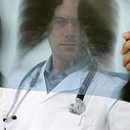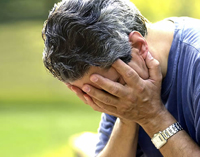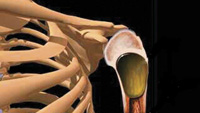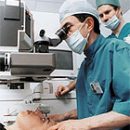From this article you will learn about the causes and symptoms of the tumors of the head and spinal cord.
Content
The tumor of the head (dorsal) brain is a progressive intracranial formation that is destroying or squeezing the brain and leading to violation of vital functions.
To date, the problem of tumor growth in general and tumors of the nervous system in particular did not solve. It is known that the essence of the process is in violation of immune supervision, the reason for which various internal or external factors can serve. The disease develops slowly, imperceptibly for the patient and requires an appeal to the doctor already in the far stage, when the radical assistance cannot be rendered.
When analyzing the life and history of patient disease, you can find an indication of the transferred crankny injury, infection, intoxication, long-lasting chronic stress disorders, physical and mental overloads, but the direct connection with the beginning of the tumor process cannot be installed.
Risk factors
The only mounted risk factor is radiation. In previous years, children suffering from the scan dermatomycosis caused by a fungal infection was used radiation therapy at low doses.
Subsequently, it led to an increased risk of brain tumors. Currently, most brain tumors are caused by the irradiation of the head for other types of malignant tumors.
There are assumptions that the impact of vinyl chloride (colorless gas used in the manufacture of plastic products), aspartama (sugar substitute) and electromagnetic fields of mobile phones or high-voltage lines may be accompanied by an increased risk of developing brain tumors.
Development of the disease
As you know, the nerve cells do not multiply, and therefore the head (the dorsal) brain or peripheral nerve trunks are squeezed, germinating or destruction with a tumor tissue, which grows from bone structures, brain shells and nerve, vascular wall or from elements constituting the structural basis of the brainstate. Thus, tumors can be divided into intracerebral and non-injuries.
Symptoms of tumors of the head (spinal) brain
 The clinical characteristics of the brain tumors is represented by two groups of symptoms. These are focal symptoms of the lesions of the head or spinal cord due to the compression or destruction of certain sections of cerebral tissue, and the general-selling symptoms developing against the background of increasing intracranial pressure.
The clinical characteristics of the brain tumors is represented by two groups of symptoms. These are focal symptoms of the lesions of the head or spinal cord due to the compression or destruction of certain sections of cerebral tissue, and the general-selling symptoms developing against the background of increasing intracranial pressure.
Tumor progresses slowly and gradually. At the first stages of the disease, the function of the head and spinal cord is completely saved. This compensation continues until the second stage, when the first signs of decompensation appear, circulatory disorder in the affected area or an increase in intracranial pressure. The patient has moderate headaches, non-system dizziness, weakness, fast fatigue, disability. In connection with the progression of tumor growth, the disease enters the following stage - weakness appears in the limbs, convulsive seizures, vision disorders, hearing, taste, smell, are noted, decrease in memory, deception of perception, agnosia (unrecognized), apraxia (violation of motor skills) , disorder of planned actions, etc.
At the next stage, a clear neurological symptoms of lesion of the right or left hemispheres of the brain, cerebellum or spinal formations is formed. Received right-or left-sided paralysis of the extremities, violation of speech, letters, accounts, weakening control over the pelvic functions. With damage to the structures of the spinal cord, weakness increases, the sensitivity changes, urination disruption occurs, the stool delay.
In parallel with the growing of focal symptoms, an increase in intracranial pressure is noted - the patient has a headache that acquires night and morning character. The patient is trying to use a high pillow, in the morning get up early to get rid of headaches. Marked heaviness in the head. Nausea, vomiting, rare pulse, enhancing headaches when tilting head down, with jumps, running, lift on the stairs. Appears «Bulp» View, feeling «vitality» In the ears, disaggeration and memory.









